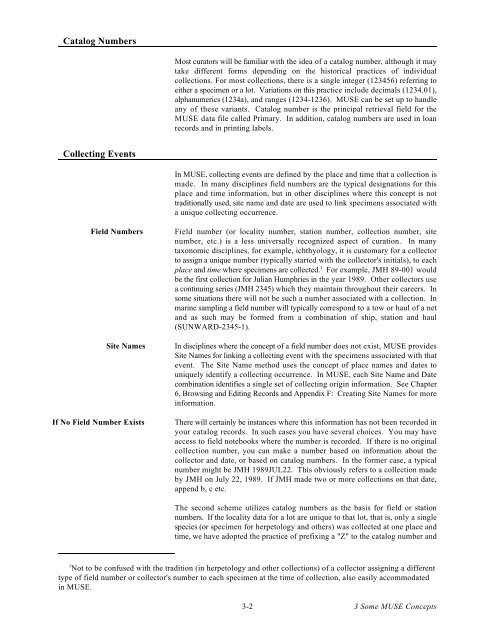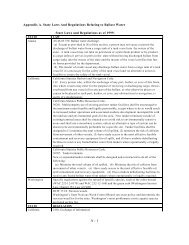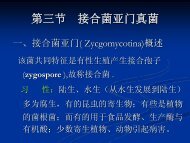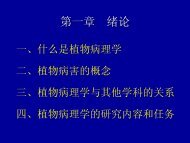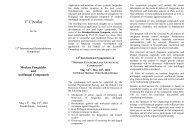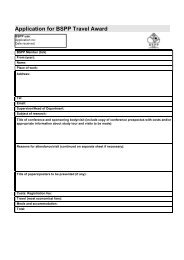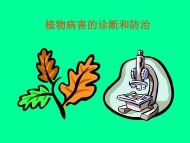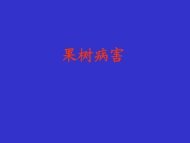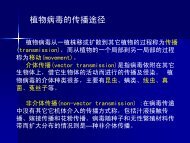Create successful ePaper yourself
Turn your PDF publications into a flip-book with our unique Google optimized e-Paper software.
Catalog Numbers<br />
Collecting Events<br />
Most curators will be familiar with the idea of a catalog number, although it may<br />
take different forms depending on the historical practices of individual<br />
collections. For most collections, there is a single integer (123456) referring to<br />
either a specimen or a lot. Variations on this practice include decimals (1234.01),<br />
alphanumerics (1234a), and ranges (1234-1236). MUSE can be set up to handle<br />
any of these variants. Catalog number is the principal retrieval field for the<br />
MUSE data file called Primary. In addition, catalog numbers are used in loan<br />
records and in printing labels.<br />
In MUSE, collecting events are defined by the place and time that a collection is<br />
made. In many disciplines field numbers are the typical designations for this<br />
place and time information, but in other disciplines where this concept is not<br />
traditionally used, site name and date are used to link specimens associated with<br />
a unique collecting occurrence.<br />
Field Numbers Field number (or locality number, station number, collection number, site<br />
number, etc.) is a less universally recognized aspect of curation. In many<br />
taxonomic disciplines, for example, ichthyology, it is customary for a collector<br />
to assign a unique number (typically started with the collector's initials), to each<br />
1<br />
place and time where specimens are collected. For example, JMH 89-001 would<br />
be the first collection for Julian Humphries in the year 1989. Other collectors use<br />
a continuing series (JMH 2345) which they maintain throughout their careers. In<br />
some situations there will not be such a number associated with a collection. In<br />
marine sampling a field number will typically correspond to a tow or haul of a net<br />
and as such may be formed from a combination of ship, station and haul<br />
(SUNWARD-2345-1).<br />
Site Names In disciplines where the concept of a field number does not exist, MUSE provides<br />
Site Names for linking a collecting event with the specimens associated with that<br />
event. The Site Name method uses the concept of place names and dates to<br />
uniquely identify a collecting occurrence. In MUSE, each Site Name and Date<br />
combination identifies a single set of collecting origin information. See Chapter<br />
6, Browsing and Editing Records and Appendix F: Creating Site Names for more<br />
information.<br />
If No Field Number Exists There will certainly be instances where this information has not been recorded in<br />
your catalog records. In such cases you have several choices. You may have<br />
access to field notebooks where the number is recorded. If there is no original<br />
collection number, you can make a number based on information about the<br />
collector and date, or based on catalog numbers. In the former case, a typical<br />
number might be JMH 1989JUL22. This obviously refers to a collection made<br />
by JMH on July 22, 1989. If JMH made two or more collections on that date,<br />
append b, c etc.<br />
The second scheme utilizes catalog numbers as the basis for field or station<br />
numbers. If the locality data for a lot are unique to that lot, that is, only a single<br />
species (or specimen for herpetology and others) was collected at one place and<br />
time, we have adopted the practice of prefixing a "Z" to the catalog number and<br />
1Not<br />
to be confused with the tradition (in herpetology and other collections) of a collector assigning a different<br />
type of field number or collector's number to each specimen at the time of collection, also easily accommodated<br />
in MUSE.<br />
3-2<br />
3 Some MUSE Concepts


